Help page
Help section page of GreeningDB, here you will find a guide to navigate through the database. If you have any questions that are not covered on this page please send an email to crissloaiza@gmail.com.
Introduction
Citrus genus comprises some of the most important and commonly cultivated fruit plants. Within the last decade, citrus greening disease (also known as Huanglongbing or HLB) have emerged at the biggest threat for citrus industry. This disease does not have a cure yet, and thus many efforts have been done to find a solution to this devastating condition. There are challenges in the generation of high-yield resistant cultivars, in part due to the limited and sparse knowledge about the mechanisms that are used by the Liberibacter bacteria to proliferate the infection in Citrus plants. This database have been implemented to provide the annotation of Liberibacter proteomes, as well as the host-pathogen comparactomics tools, a platform to compare the predicted interactomes of two HLB host-pathogen systems.

Host-pathogen comparactomics module
Comparactomics tool provide two comparison flavors. A user can either compare two host (Citrus) against a pathogen (Liberibacter); or compare two pathogen (Liberibacter) against a single host (Citrus). Other options for the user in this module include selecting which protein-protein database will be used as a template in the prediction process, or to define BLASTp alignment filters to determine homolog proteins.
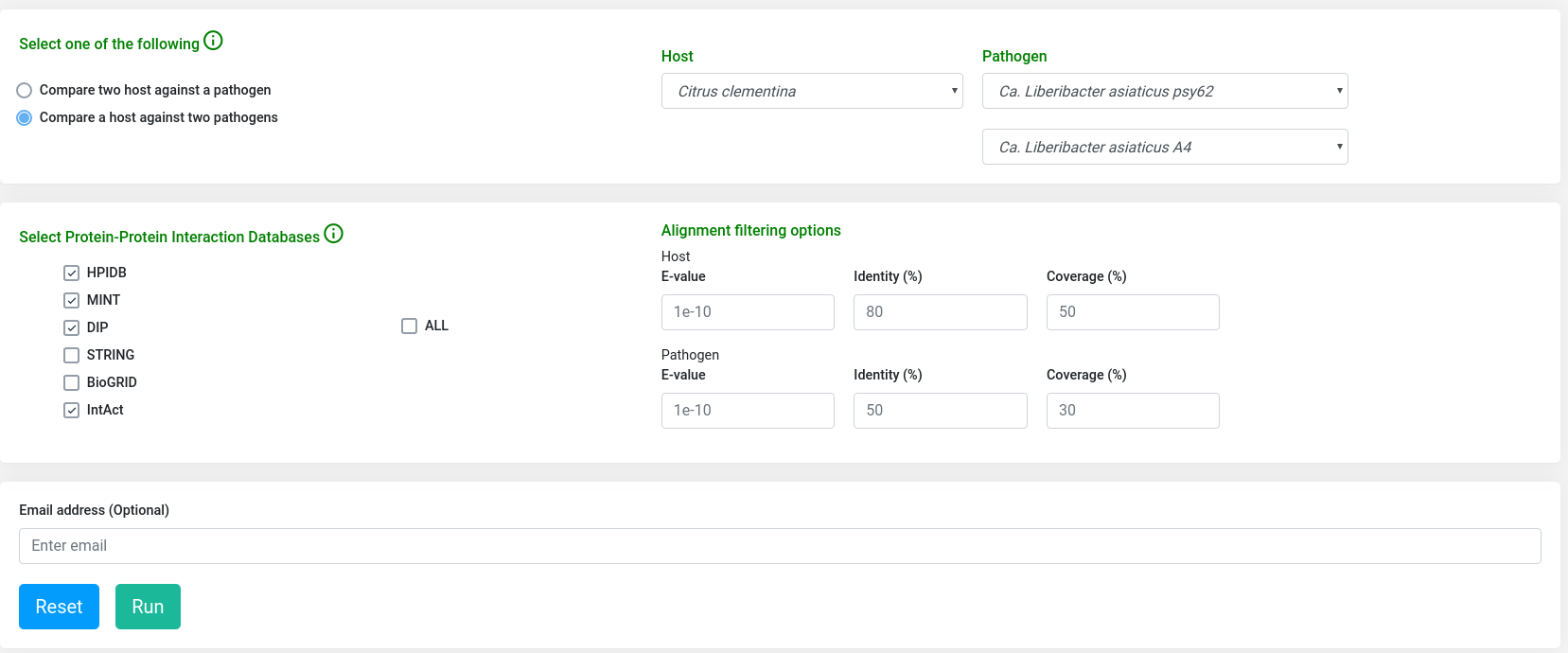
When a job is submitted it will be assigned to a unique identifier that user can access to check the status of the job (queried, running or done). After the job is completed it will display the results in an enriched table with the option to sort the content by column or to be filtered by keyword; result table can be downloaded in excel or pdf format, or copy as clipboard. Users also can provide an email address to receive a notification when the job completes.


GreeningDB provides a network visualization platform implemented using SigmaJS, this plugin was specially chosen given it performance at displaying large networks. From the host-pathogen network visualization of a typical comparison result , a user can visualize a set of traits for each node (species, description, degree), also a user can easily identify hub nodes (nodes with a higher number of edges). This is useful, as hub nodes have been found crucial in infectious diseases pathways. A user is not limited to the network analysis that is provided through our database, the resulted network can be further examined in any network analyzer that could handle JSON or tabular network files.

Features
Data collected from the literature or resulted from the annotation pipeline of GreeningDB is presented in separate search modules, in total GreeningDB includes nine (9) search modules. In seven of those modules Liberibacter protein annotation can be retrieved (Protein Annotations, Secreted Effectors, Subcellular Localization Annotation, Gene Ontology (GO) Term Annotation, Functional Domain Mappings (InterPro), Virulence Factors, and Predicted Effectors (EffectiveDB)). In addition, two more modules (Citrus genes regulated by HLB infection, and Host-pathogen interactions) are available to gather annotations concerning those Citrus proteins that were found related with HLB according to the literature mining. The module data will be displayed according to the dataset selected.
Examples
(a) Fetch proteins of a specific Ca. liberibacter asiaticus strain that are related with “resistance” functional domains.

(b) Get those C. sinensis genes found regulated under HLB disease conditions.
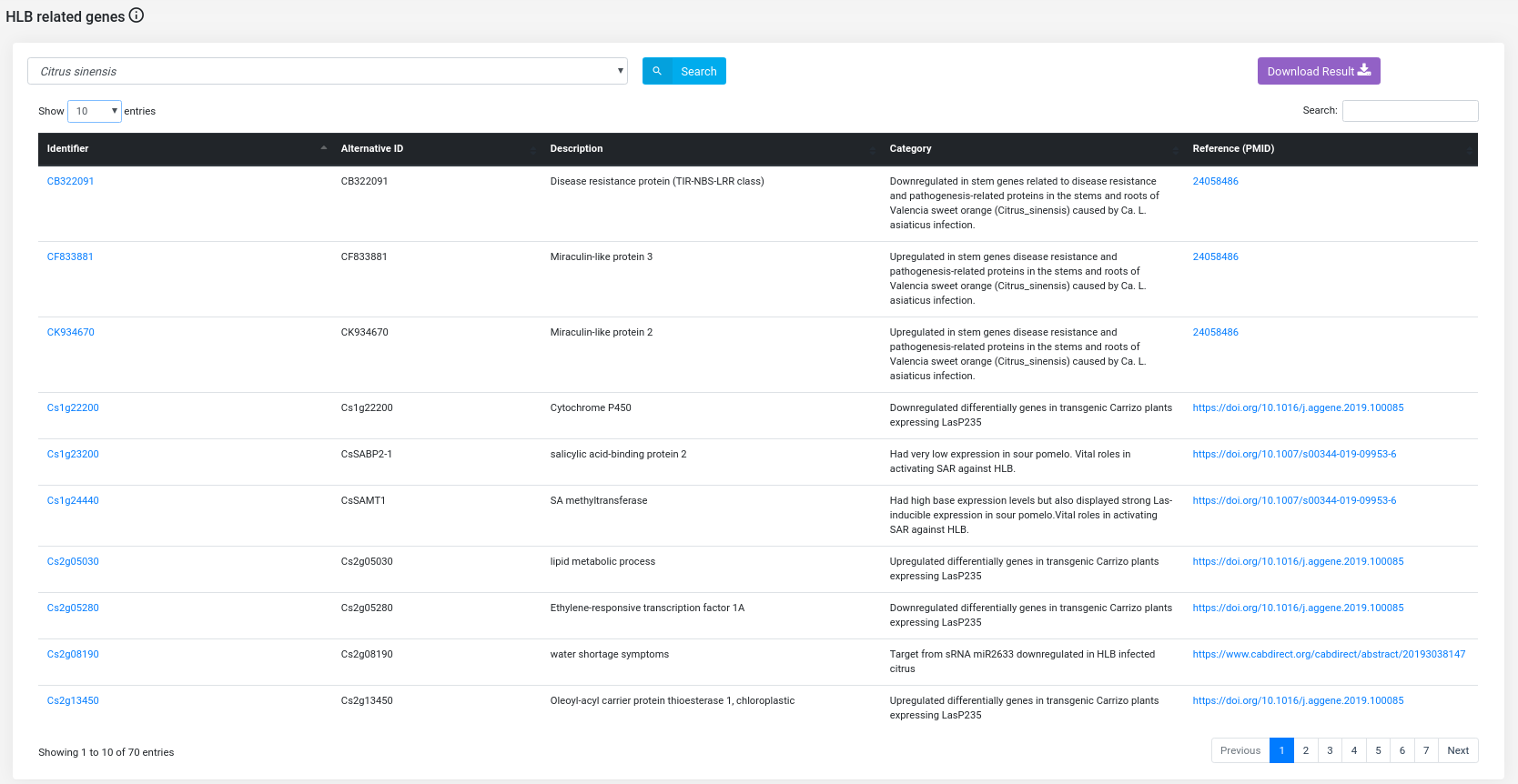
(c) Obtain the extracellular proteins of a certain Ca. liberibacter asiaticus strain.

(d) Retrieve the secreted effectors of a Ca. liberibacter africanus strain
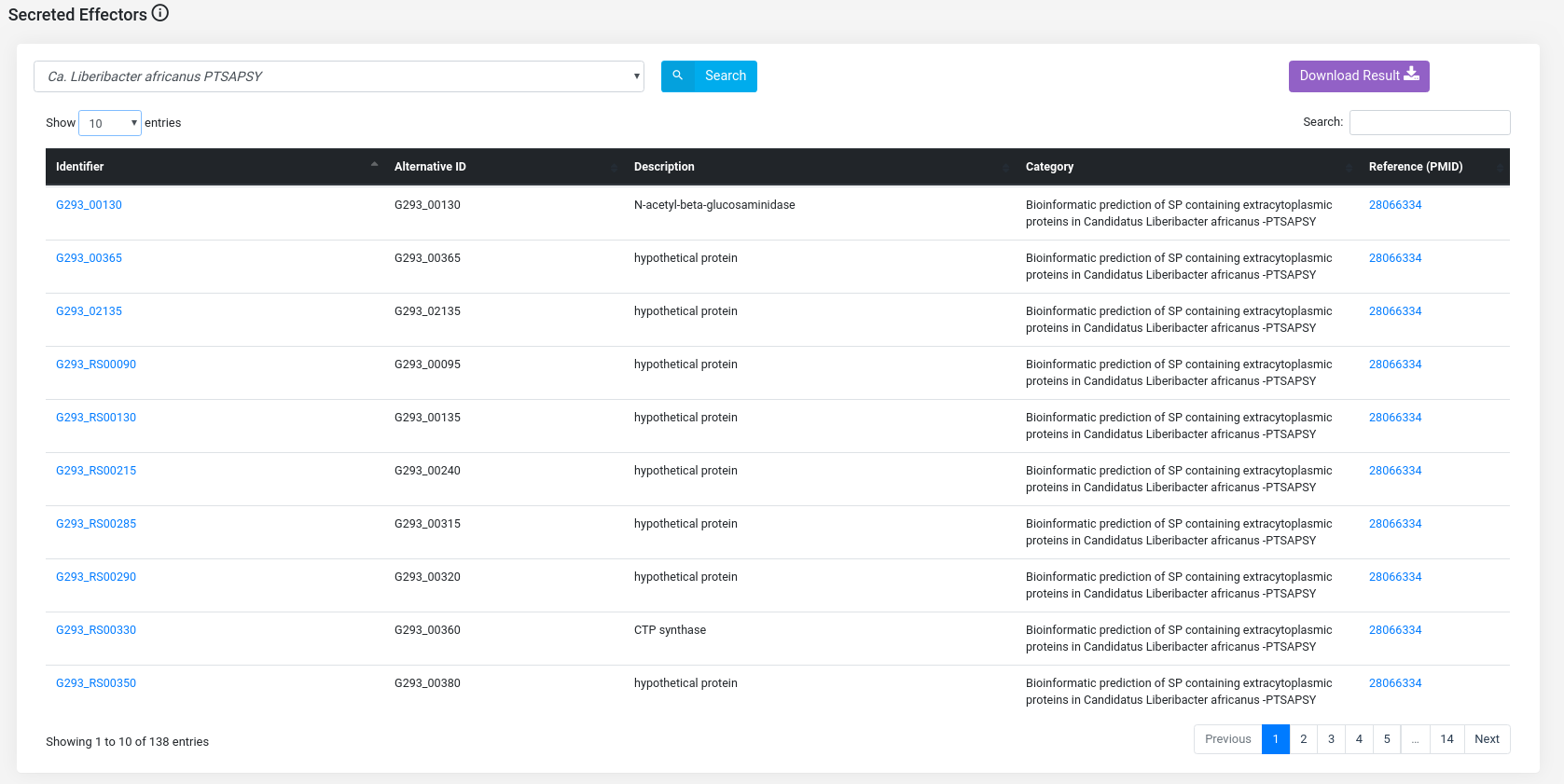
Advanced search module
This tool provides an advanced search module that can be used to search for proteins that fulfill a selected filtering criterion, means that for a given keyword plus a set of filtering parameters, this module will look up for any record that match. This search module is comprehensive and will look for articles, protein annotations, GO terms, experiment descriptions and many others that would match to the provided keyword. Additionally, a basic option to perform a quick search of a protein accession is available at all GreeningDB pages, and both the advanced and the basic search will display the complete information that can be obtained from our database records.

After the search is done, it will display a table with all the records that matched the selected filtering criterion.
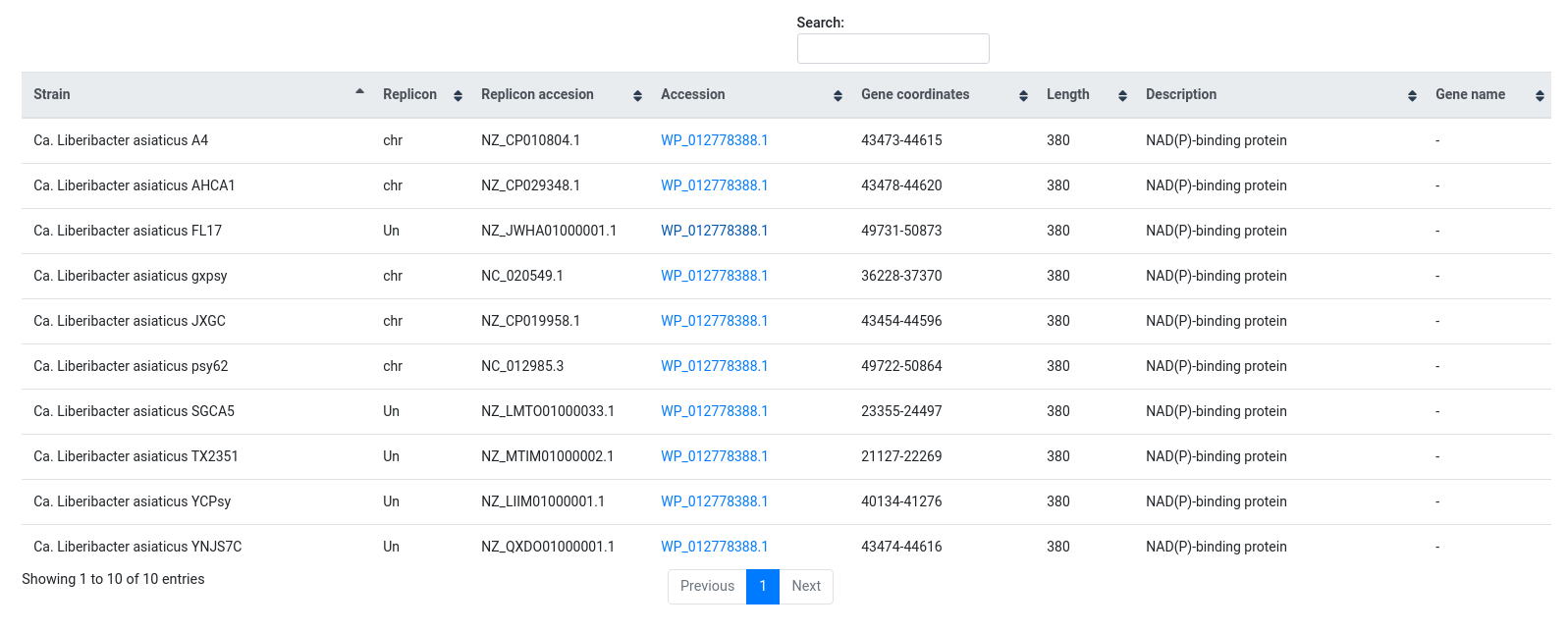
If click at one of the accessions links it will redirect the user to a new page in which is displayed the complete information that can be obtained from our database records. Including functional domain annotation, GO terms, subcellular localization, sequence, replicon, etc.



BLAST server
BLAST was implemented locally in our server to provide to the user the functionality of homology sequence search. In addition to the proteomes datasets, a user can select to query its sequences against all proteomes (default option), all Citrus susceptible to HLB, all Citrus tolerant to HLB, all Ca. liberibacter infecting Citrus or all Ca. liberibacter infecting Solanacearum. User can upload either a nucleotide or amino acid sequence and the system will automatically detect if perform BLASTp or BLASTx.
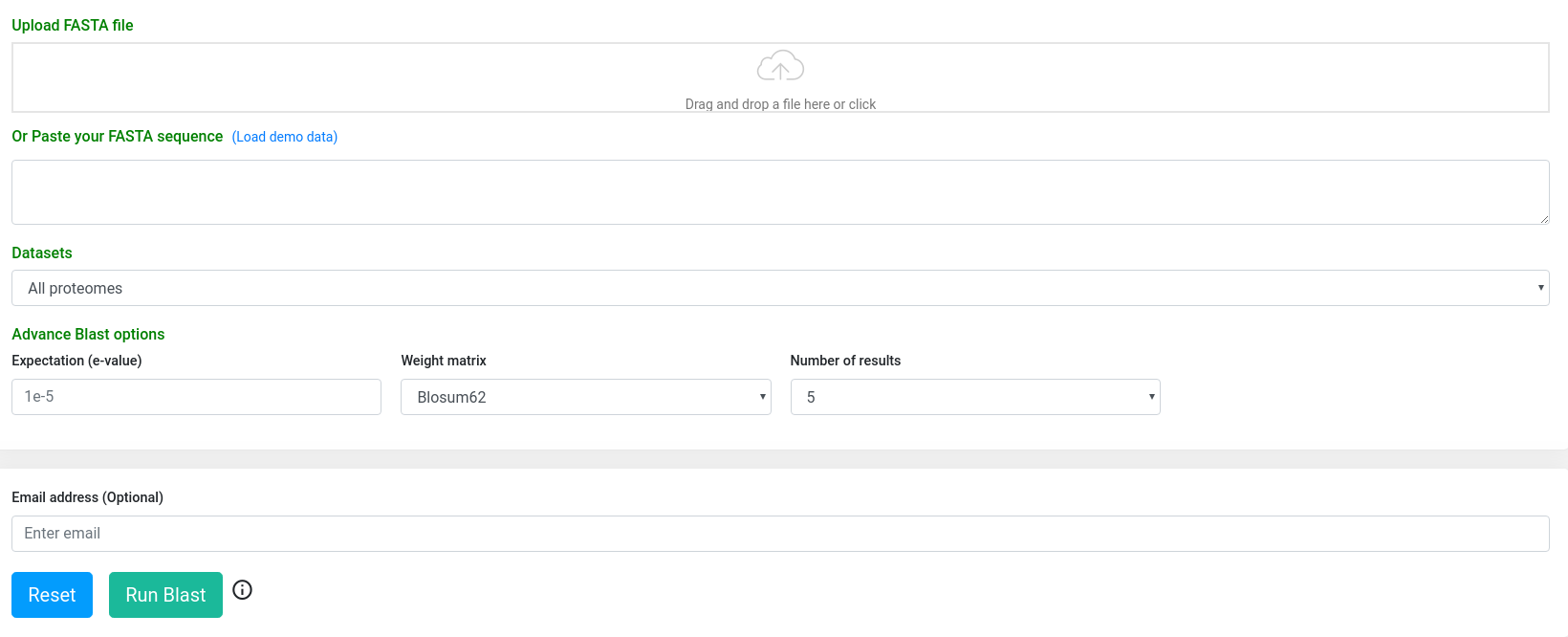
Result page provides a summarized version in which the user can download the alignments in tabular or in standard alignment format. Also, there is a more detailed option in which the alignments are visualized in an enriched mode.
Summarized
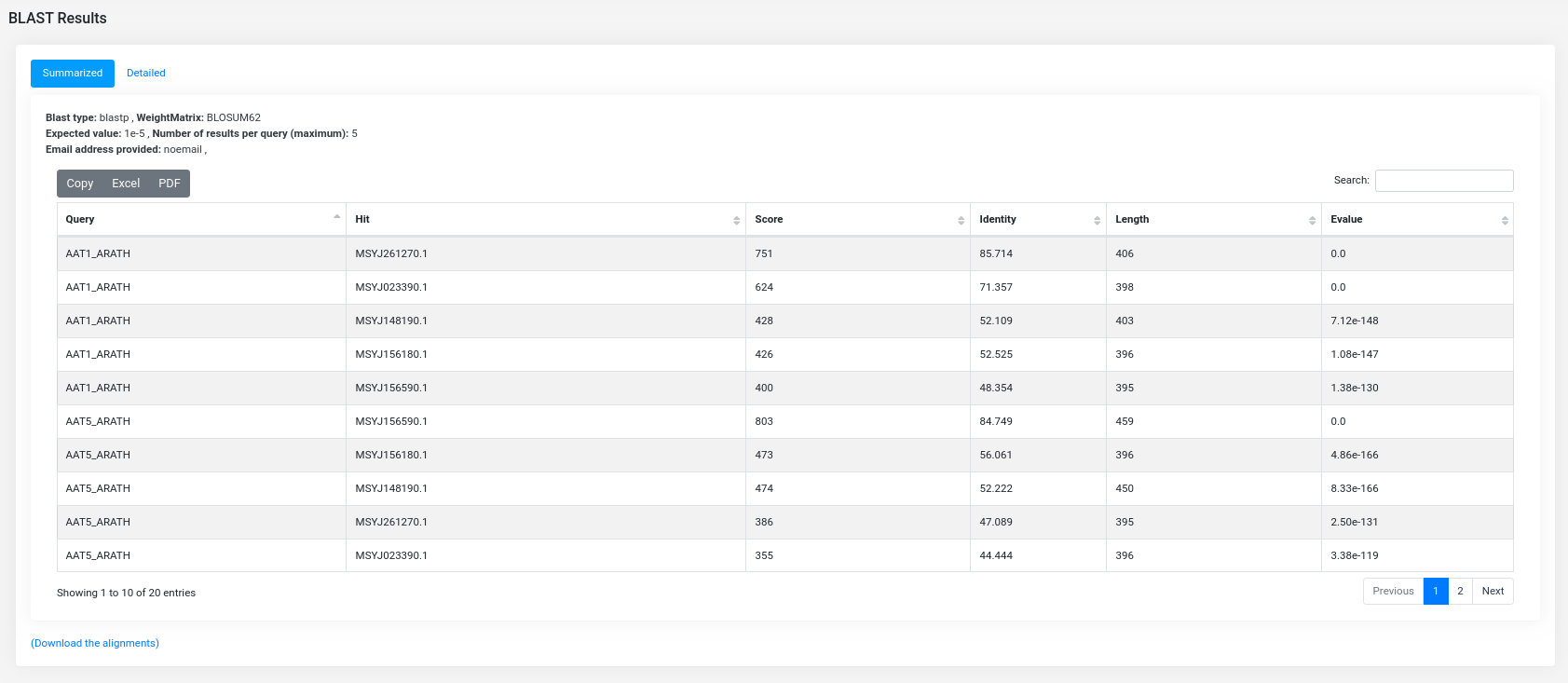
Detailed
